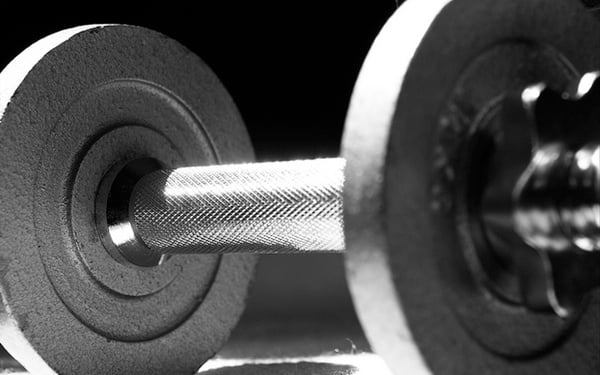To increase metabolic rate, combine strength training and cardio in one workout. Photograph courtesy of Flickr user apfelfred.
It doesn’t take a genius to know that long-term weight loss takes hard work—no amount of electric ab belts or crafty med-spa offerings can change that. While many point to metabolism as the magic bullet that allows you to shed pounds, that’s not exactly true—but it does affect what happens to those pesky calories, and there are ways you can boost it for maximum impact. We break down the basics and share tips from local experts on how to hike up your metabolic rate.
Understanding Metabolism
Metabolism is your body’s process of breaking down food and converting it to energy to fuel various functions. It’s easy to blame low metabolism for our body shape or less-than-ideal weight, but the truth is more complicated.
“Basal metabolic rate is very difficult to measure,” says endocrinologist Frank R. Crantz, referring to the number of calories a person at rest burns per hour to keep his or her body functioning. “Even among children in the same family there’s variability, so we have to believe that each person handles calories in different ways.”
While there are a handful of people who do have metabolic irregularities, it’s more likely that lifestyle habits are the culprit. In pursuit of a slimmer waistline, proper diet and exercise affect metabolism more than anything else.
Give It a Boost With Strength Training
With physical activity, our muscles need more oxygen, our hearts need to pump faster, and we need to sweat to cool down. All of this requires more energy, so our metabolic rate revs up to provide it.
“Metabolism can be thought of as an idling car engine, and when you exercise it’s like lightly putting your foot on the gas,” says local trainer Errick McAdams. “Any exercise at all is good, but weight lifting and cardio are best.”
Muscle building is key—muscles require more energy to move, and your body will need to metabolize food faster to support you. It’s also important to do both cardio and weight training in the same session, instead of on separate days.
Finally, don’t fall into a steady exercise routine, as over time our bodies adapt, the routine becomes easier, and we need less energy (and burn fewer calories) to complete what’s familiar. As McAdams says, the only things that should be routine are the intensity of your workout and your exercise schedule.
Eat Right—and at the Right Time
“Exercise complements a good diet, which is the most important thing [in weight loss],” says McAdams. “You can’t out-work a bad diet—if you’re eating the wrong foods or portion sizes, you won’t lose weight.”
Registered dietitian Stephanie Mull can attest to that. Her metabolism-boosting tips include eating foods that pack protein—the molecules are harder to break down, and it supports muscle building. Snacks like mixed nuts, cottage cheese and fruit, Greek yogurt, veggies with hummus, or whole wheat crackers and salsa are good choices. Aim for a balance among as many food groups as possible.
Watching what you eat is an obvious consideration, but when you eat is just as important. “People who don’t eat frequently . . . go all day without supporting [their body’s] energy demands,” Mull explains. “Your body will pull from other energy sources, such as your muscle mass, and go into survival conservation mode, which slows metabolism.”
Keep It Natural
Metabolism is a naturally occurring process, and any attempt to encourage it should involve natural methods. There are plenty of products on the market that claim to harness the metabolic power, but Dr. Crantz says to be wary of such claims.
Mull mentions the underestimated value of water, which powers many of our metabolic processes, and also suggests that listening to your body’s cues is the best way to gauge your metabolic rate.
“Find a happy medium between knowing when you’re hungry and knowing when you’re full to keep your engine revved,” she says. “If you’re doing everything right in terms of eating and exercise, metabolism will fall into place.”

















